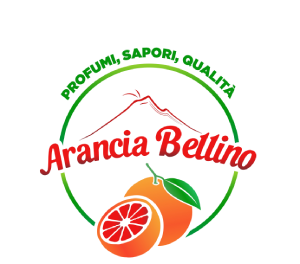It is difficult to build a detailed route through which the citrus fruits arrived in Sicily, the only certainty is
that their arrival dates back to very ancient times.
A mosaic present in the Villa del Casale in Piazza Armerina testifies to the presence of cedar and lemon
in Sicily already in the late Roman imperial period.
The bitter orange (citrus aurantius) was brought to Sicily by the Arabs during the 7th century and until
the 16th century only “blonde oranges” were cultivated - for ornamental purposes only In fact, beautiful
”gardens” were created - a term still used today to indicate the strips of land intended for the cultivation
of oranges.
The ”red orange”
(aurantium iudicum), was introduced into Sicily by a Genoese missionary returning from the Philippines
and described for the first time by the Jesuit Ferrari , in the work”Hesperides” (1646), as a particular
fruit, with peculiar characteristics and pigmented pulp ("purpurei coloris medulla ").
But only in the 19th century did the cultivation of blood oranges in Sicily acquire a primary role in the
Sicilian economy - up to the present day.
A large part of the territory of Sicily is used for the cultivation of blood oranges. The gardens connect the
sea of the island to the snow of the volcano - inebriating, in spring, the air with the intense scent of
orange blossom.
The production of red orange is concentrated in the eastern part of Sicily, in the territories around
Etna, the largest active volcano in Europe, between the provinces of Catania, Enna and Syracuse.
The nature of the soil, the climate and the notable temperature variations due precisely to the presence
of the volcano give the oranges the typical “red pigmentation”, due to the presence of anthocyanins,
making them unique and inimitable of its kind, testifying to the close link between the territory and the
product itself.
Description of the orange tree
The orange tree can reach up to 12 meters in height - the leaves are fleshy and evergreen, elongated in
shape and with a crenulated margin.
The flowers, the so-called “orange blossom”, are white and very fragrant. They spread an intense
fragrance in the air, have a very delicate appearance, are a symbol of purity and for this reason they are
used in wedding ceremonies, for ornamental purposes.
Orange cultivation is only possible where the soil is very fertile and the climate is temperate. Each tree
can produce up to 500 fruits with more or less intense mottling depending on the variety.
Production begins in November with the first varieties, the naveline, with blonde pulp ; while the red
ones start in December and last until May - June with the later varieties, so it is possible to consume
fresh oranges - for a fairly prolonged period of the year.
Variety of blood orange
-SANGUINELLO(blood): it was discovered in Spain in 1929. Globose in shape, with a slightly rough orange skin
with red shades; with sweet pulp, but less sugary than tarot, orange in color with intense streaks.
Production begins in February and harvesting takes place between March and April, when the fruits
have reached optimal ripeness. It's ideal for juices.
-MORO: it is the reddest variety of all: its pulp is blood red. It has a very intense sweet-sour taste, not
always appreciated. It is ovoid or globular in shape, the skin is orange in color with strong red shades.
The production of Moro begins in December. With this variety the citrus campaign of blood oranges is
inaugurated, the harvest is carried out between January and February.
-TAROT: it originates in the territory of Francofonte, in the province of Syracuse, at the beginning of the
century. It is the most prized variety among red-fleshed oranges, the most widespread in Italy and the
most appreciated abroad.
It has an obovate or globose shape, with a more or less pronounced prominence at the base. Its skin is
orange with red shades and the pulp is orange with more intense red streaks when ripe is complete
Production begins in December and continues until May.
It lends itself better than any other variety to table consumption.
Cookies help us deliver our services. By using our services, you agree to our use of cookies.



